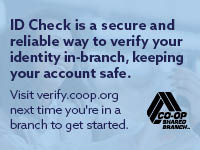The concept of credit is enormously broad, as well as enormously important. It’s only natural that the idea of introducing it to your kids is accompanied by apprehension. After all, their credit and debt habits will have a profound impact on their lives. If you start early with some engaging simulation of real-life finances, you can be sure they’ll go on to manage their credit carefully.
Start With Easy Ideas
Before you introduce the idea of credit, start with the concept of earning money. Set up a system of chores that are worth different amounts of money based on how much time they take or their difficulty. Connecting different values to different tasks is important because it sends home the idea that income is earned better than an arbitrary end-of-week allowance. Once your child buys their first cheap toy that breaks quickly, you can be sure they’ll know the value of a dollar. Provide them with a piggy bank so they can save or “hold” money themselves.
Introducing Interest
Once your child is comfortable with the idea of earning and saving money, you can familiarize them with the concept of interest. Ask if you can borrow some money, since they’re just “holding” it. You’ll put it to good use then give it back at the end of a month. At the end of the month, you’ll also pay them something extra for the privilege of having borrowed the money. Make sure you give them an IOU, or “bond,” that you’ve both signed with all the details. Offer enough “bonds” so that the idea sticks, but be careful about the rates you offer, or you might end up owing more than you expected!
Financing
Interest is fun when you’re the creditor, but it’s important to also learn about being the debtor. When they’re a little bit older and have some more money, offer your child the opportunity to finance something reasonably small, like a $50 video game. Instead of paying $50 when they get it, they’ll pay for it a week at a time — $13 a week for five weeks. Chances are they’ll quickly figure out how much more they’re paying than if they would have just saved up the $50.
Credit Scores
Credit scores don’t lend themselves easily to such practical examples. However, if you’ve implemented either of the above “games” with success, it should be easy to explain the idea of a credit score. You can start by asking how they might assess whether an adult they don’t know is trustworthy enough for them to lend money for a “bond.” There are lots of potential answers, but none are so simple and comprehensive as the idea of credit reporting and credit history. From there, as your child grows into maturity and begins taking on jobs while attending high school, you’ll be able to discuss the actual system that determines a person’s FICO score, and how they can start building good credit.
Lead by Example
Another way to introduce your child to the concept of credit and debt, once they’re nearing the end of their high school career, is to explain a part of the family financial situation, like the car payment. Why did you choose that rate? How did the payments fit into your budget? Opening financial discussions will help prepare them for the real situations they’ll soon be dealing with, like student loans.
By the time preapproved credit card offers with outrageous rates start arriving in the mail on your child’s 18th birthday, your mind can be at ease. He or she will already know how to handle them!
Original Source: http://lmcu.frc.finresourcecenter.com/Loan__Credit_Management_78913.html?article_id=2279


